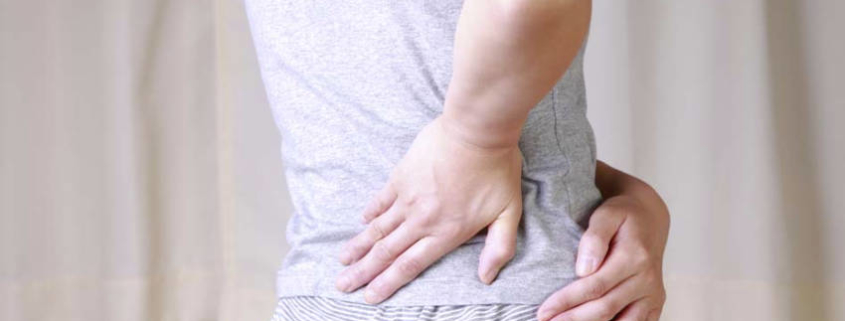Osteopathy Treats Hip Bursitis
Hip bursitis symptoms most often include a deep aching pain that concentrates on the outside of the hip joint at the top of the outer thigh. This sometimes includes buttock pain which may extend down the outside of the leg towards the knee. The pain is usually intense and sharp in the early stages of the condition and may develop into a dull ache over time.
Normal activities such as walking, climbing stairs, running, sitting cross-legged, getting up from a chair or prolonged standing often aggravate the symptoms. Lying on the hip at night is very painful and may be severe enough that it disturbs your sleep. Putting pressure over the trochanter with your finger increases the pain. Stiffness may develop around the hip joint
The trochanteric bursa is a large fluid filled sac which facilitates the gliding of skin, buttock and thigh tendons over the greater trochanter which is the large bump that can be felt on the outside of the femur or upper leg bone. The bursa has the function of working as a shock absorber and as a lubricant for the movement of the muscles adjacent to it thus preventing friction. Muscles attach to this bony prominence so the hip joint is able to move. When this bursa becomes inflamed and causes pain it’s called trochanteric bursitis. Trochanteric bursitis can strike anyone but seems more prevalent in females and senior patients.
The cause of trochanteric hip bursitis is usually overuse and repeated friction, often as a result of faulty biomechanics. Occasionally it can be caused by a sudden impact to the hip such as a fall when playing sports or in life in general, during accidents or bumping the hip on a protruding object can be an onset for hip pain. Activities that require repeated rapid joint movement like running or cycling long distances may lead to irritation or inflammation within the bursa. Foot, ankle or knee issues that create an abnormal gait can be factors for hip joint bursitis.
Trochanteric bursitis may occur together with disc disease of the low back or arthritis of the hip, inflammatory arthritis. It also may develop at the site of a previous hip surgery.
Osteopathic treatment manipulations are performed to help restore normal movement to the hip joint, knees, feet and lower back. Abnormal motion of the lumbar spine and sacroiliac joints may contribute to an altered gait that stresses the hip joint. Osteopathic manipulation to the lumbar spine and pelvis will help improve biomechanics.
Osteopathic treatment also involves soft tissue work to the surrounding muscles and fascia which become sore and stiff, especially if you have been limping or changed your way of walking. The goals of osteopathic treatment are to reduce the pain, restore function and prevent reoccurrence.
Correcting and stabilizing biomechanical issues of the hips, legs, knees , ankles and feet will help improve strength and coordination in the buttock and hip muscles which also enables the femur to move smoothly and can help reduce friction on the bursa.
View a list of common complains that Osteopathy can assist with
Discovery the benefits of Osteopathy
- What is Osteopathy?
- Adult health issues
- Babies and Children
- During and after pregnancy
- Common Complaints
- Testimonials
- Sports Injuries
- Genral Osteopathy FAQs
- The Science & Reasearch



